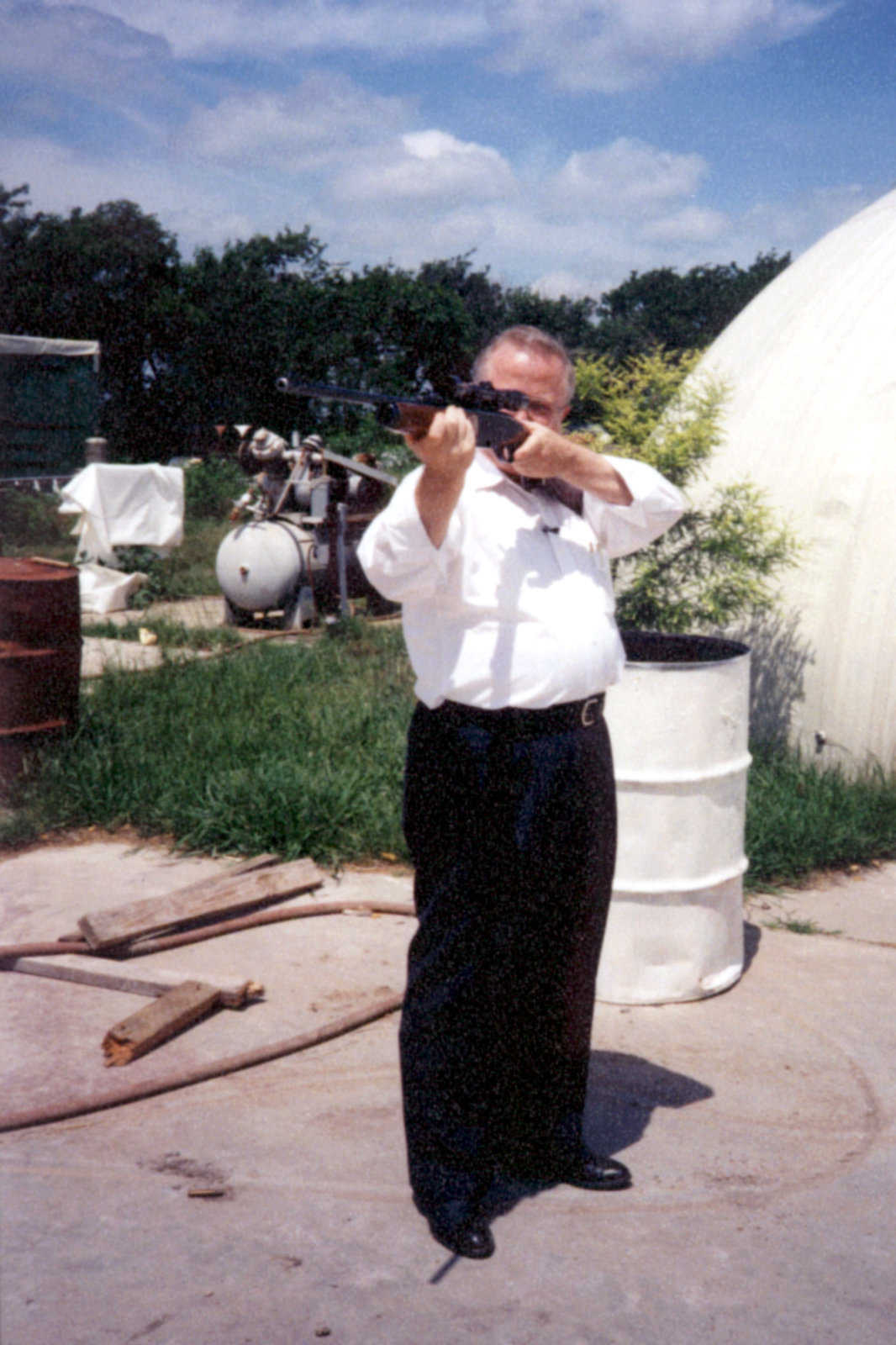About eighteen years ago, a man who lived near our Monolithic Dome Headquarters in Italy, Texas, asked me to come see his facility in the Fair Park area in Dallas. Upon my arrival, he asked me if my Monolithic Domes would stop bullets from the pistols and automatic rifles that the gangs used. I told him I knew the Monolithic Dome would stop those bullets as we had already tested from a high-powered .30-06 rifle. The rifle is far more powerful.
He walked me out to his yard where he had dug the footings and put in the formwork for a conventional metal building to be his new office. We then walked back to his current office, which was also a metal building, and he showed me where someone, the night before, had shot up his building with a machine gun. There were bullet holes through his office, some as close as a foot apart. Bullets had gone past each side of his main computer and, understandably, he was really upset.
He asked me if I could move fast to build a Monolithic Dome office building for him. I assured him we could, and offered to get right on it. He immediately ordered a sixty-foot Monolithic Dome office building to go on his property there. And, in short order, we got the building built and his contractor finished the inside.
About six months later, in the spring, he called and told me they had a terrible hail storm which really made a mess of his building and he asked me if I could come take a look. I agreed, but it was three weeks before I had time to drive up and see it.
When I pulled into the parking area for his Monolithic Dome office, I noticed two things. First, there was a car parked near his lot which, apparently, had a hailstone go right through the windshield. That indicated to me that the hail storm was very powerful, as it takes a huge amount of energy to punch a hole through a windshield. Secondly, I noted that there were two or three divots on the outside of the Monolithic Dome where it had been hit by hailstones. However, the divots seemed pretty small to me.
After inspecting the dome, I met with the owner and asked him how he was doing and what his concerns were. He said the hail storm did not damage anything on the Monolithic Dome except the exterior, but if I’d have shown up when he first called, I would have seen what he saw—a pockmarked dome that looked just like a golf ball. He told me that now, three weeks later, there were hardly any visible divots. The Monolithic Dome’s Airform membrane pulled the foam and expanded it, pretty much eliminating all of the pockmarks. Neither he nor I could see any way we could improve it further.
I advised him that there would come a time when he would need to put a new coating on the dome, and that the new coating would then, obviously, cover up any imperfections. The new coating could be metal shingles, plaster, tiles or many other choices, but it was going to be twenty years before he was going to have to worry about it.
Another Monolithic Dome that was hit by powerful hail storm with very large hailstones, was the Texhoma ISD library in Texhoma, Oklahoma. In the spring, a few months after completion, a huge hail storm hit the school. The superintendent called and told me the dome was covered in pockmarks, like a golf ball, and he asked me what to do about it. I told him the previous story about the Monolithic Dome office in Dallas and suggested that they wait a little while.
He said, “Well, I have already called the insurance company and they will be coming out. I will let you know what they say.”
The insurance company came a few weeks later and looked the dome over. They reported seeing a few divots, but no damage whatsoever to the Monolithic Dome school building. They could see no reason to pay for any repairs, as they were not needed. But the other conventional building, that was part of the school, had to have the roof replaced. That was remarkable to me.
The conventional building was really quite old and it had an exceptionally sturdy wood roof from that era. It also had two or three layers of asphalt over the wood, from re-roofings. Hailstones punched through the three layers of asphalt and the wood, landing in the classrooms. There was no doubt at all, it needed to be replaced.
When I spoke with the superintendent again to review what had happened, he said the pockmarks had pretty well taken care of themselves. He told me that if you really looked, you could see that there were some indentations.
“David, you cannot imagine the ferocity of that hail storm,” he exclaimed. He said the hail killed cows in the field by hitting them in the head and that hailstones not only dented vehicles severely, many hailstones punched all the way through the vehicles’ exteriors.
Recently, a Monolithic Dome shelter/gym in Salisbury, Missouri was hit by a hail storm, covering the roof in pockmarks. Nobody wants to have divots in their roof, but a few weeks will make a huge difference and the pockmarks will pretty much disappear. Now, If a hailstone actually penetrates the Airform membrane fabric, it obviously needs to be repaired. But so far, none of the domes have had fabric penetration. The three inches of polyurethane foam under the fabric is also extremely tough. It can be dented, but it tends to resume its old shape given some time.
Again, between fifteen and thirty years, the dome is going to need to have a covering over the Airform membrane, and at that time, it is very simple to have the roof totally renewed, looking just as smooth as ever.
Related stories
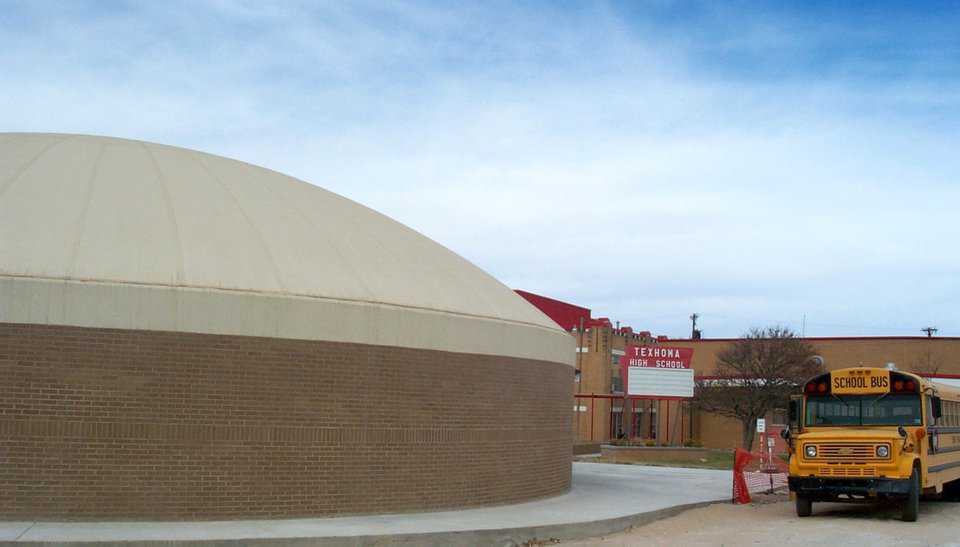
Monolithic Dome school building at Texhoma Independent School district shortly after construction.
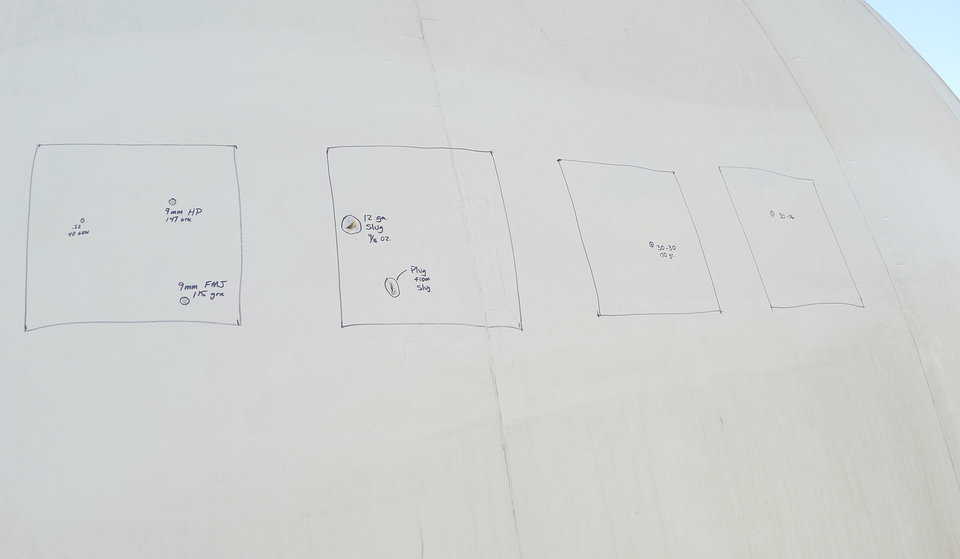
Marks from bullet test. Five guns were fired at close range with calibers from .22 to .30-06.
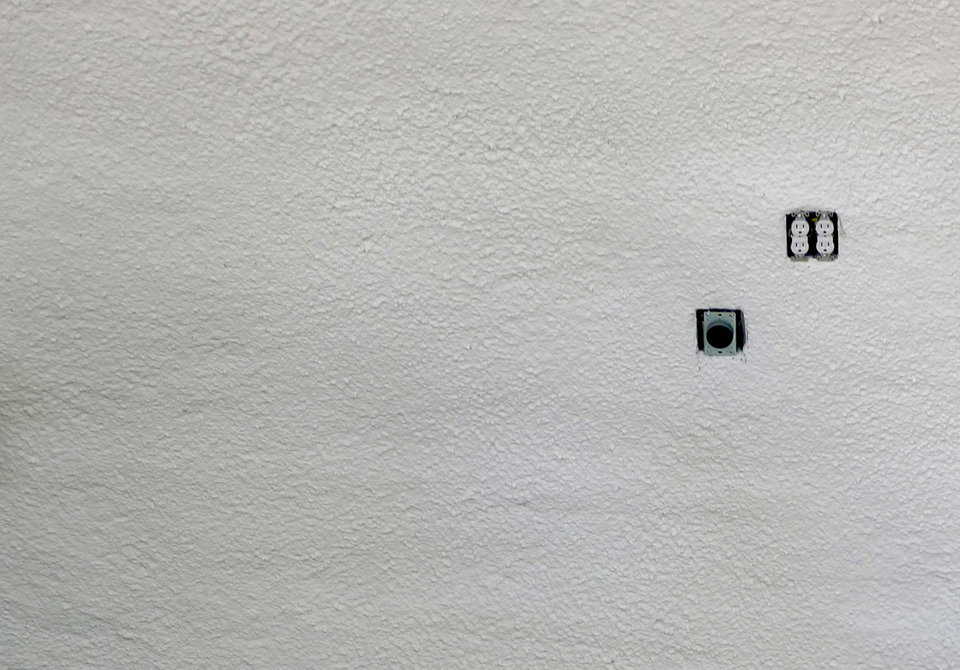
No penetration or damage is evident on the concrete interior after five close-range shots (aimed at area left of outlets).
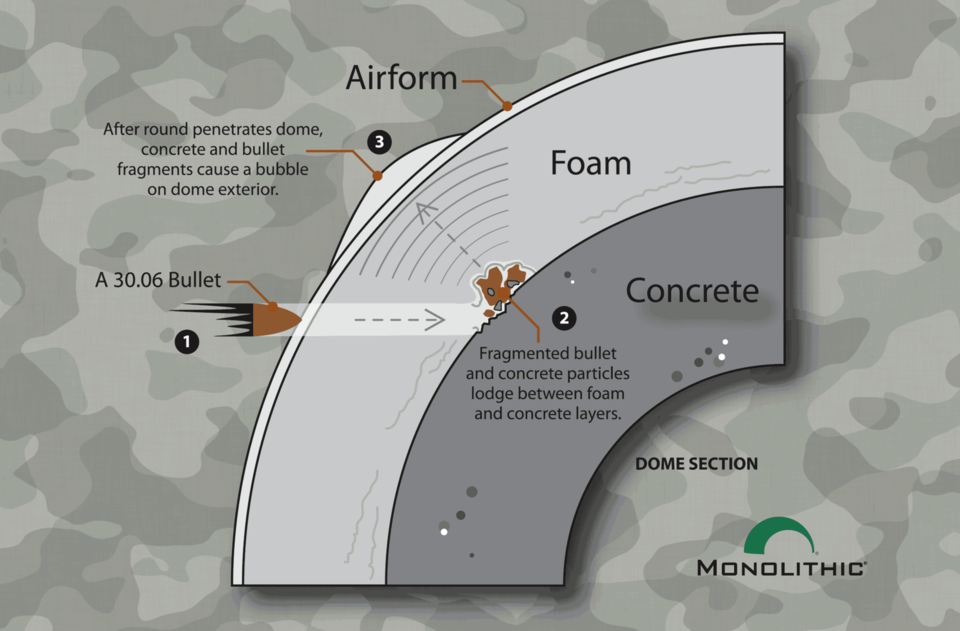
The layers of the Airform membrane, polyurethane foam and concrete typically deflect and capture bullets fired at a Monolithic Dome.
